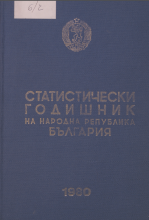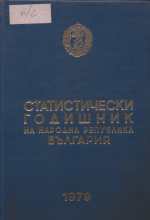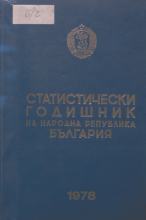
The Statistical Yearbook of the People’s Republic of Bulgaria with data for 1979 is available for the users on the web. The publication is structured in XXII sections on the principle of previous statistical yearbooks and contains data on the development of the country in all areas of economic, cultural and social life. At the beginning of each section the data sources and brief methodological notes are shown. The Statistical Yearbook contains an overview by districts: population, labour, industry, agriculture, capital investment and construction, transport and communications, technical progress, internal trade, education, culture, health and public utilities. The publication also contains an international review by countries with data on territory and population, industrial production, agriculture, transport, internal trade, foreign trade, education, culture and health.
The publication is in Bulgarian and consists of 730 pages.
Link
Electronic edition of the “Statistical Yearbook 1979”
Theme



